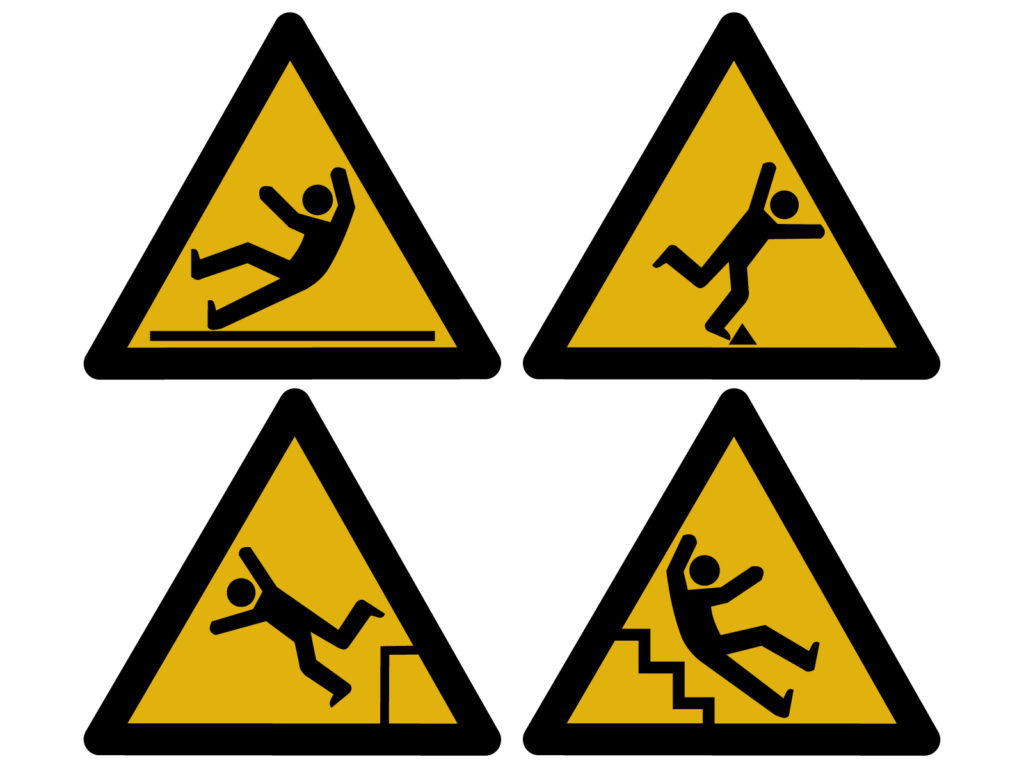
A slip, trip or fall can occur at any time and often when you least expect it. You could be walking around the workplace, carrying a load or simply getting up from your desk and a fall could occur.
Risk assessment and health and safety inspections will identify many hazards, but employees’ good health and safety awareness in the workplace will also reduce the hazards.
Some examples of slip, trip and fall hazards include:
Wet floors, as water, are often invisible and cause a slip hazard. Control is by cleaning up water and the use of warning signs.
Kurbs and steps are an oblivious hazard, but floor mats can easily trip people up.
Other trip hazards include boxes, handbags, rubbish, and photocopier paper, to name a few.
Electrical cables pose a double risk. First, the trip hazard and secondly, if cables are pulled from the wall, then there is an electric shock risk.
Good housekeeping will reduce many slip, trip and fall risks. Some examples include:
- Tie up cables and check under desks to ensure electrical safety at work
- Handbags and laptop bags need to be put in drawers or stored safely.
- Avoid leaving coats on the back of chairs as they get caught on the wheels and can cause you to fall
- Photocopy paper left on the floor
- Underfloor cable points
- Door stops could cause a trip hazard
- Coats on the back of chairs pose a risk of jamming the chair and causing you to fall
- Stairs are an oblivious place where people can fall. Keeping the stairs free of obstacles and always holding the handrail will reduce the risk of accidents.
- Check carpets for loose areas and report them immediately so they can be fixed.
- Think about your actions, tidy up after yourself, report any concerns and if you are caring or moving a load, check your route first.

To reduce the risks of injury, you must ensure effective control measures are in place.

